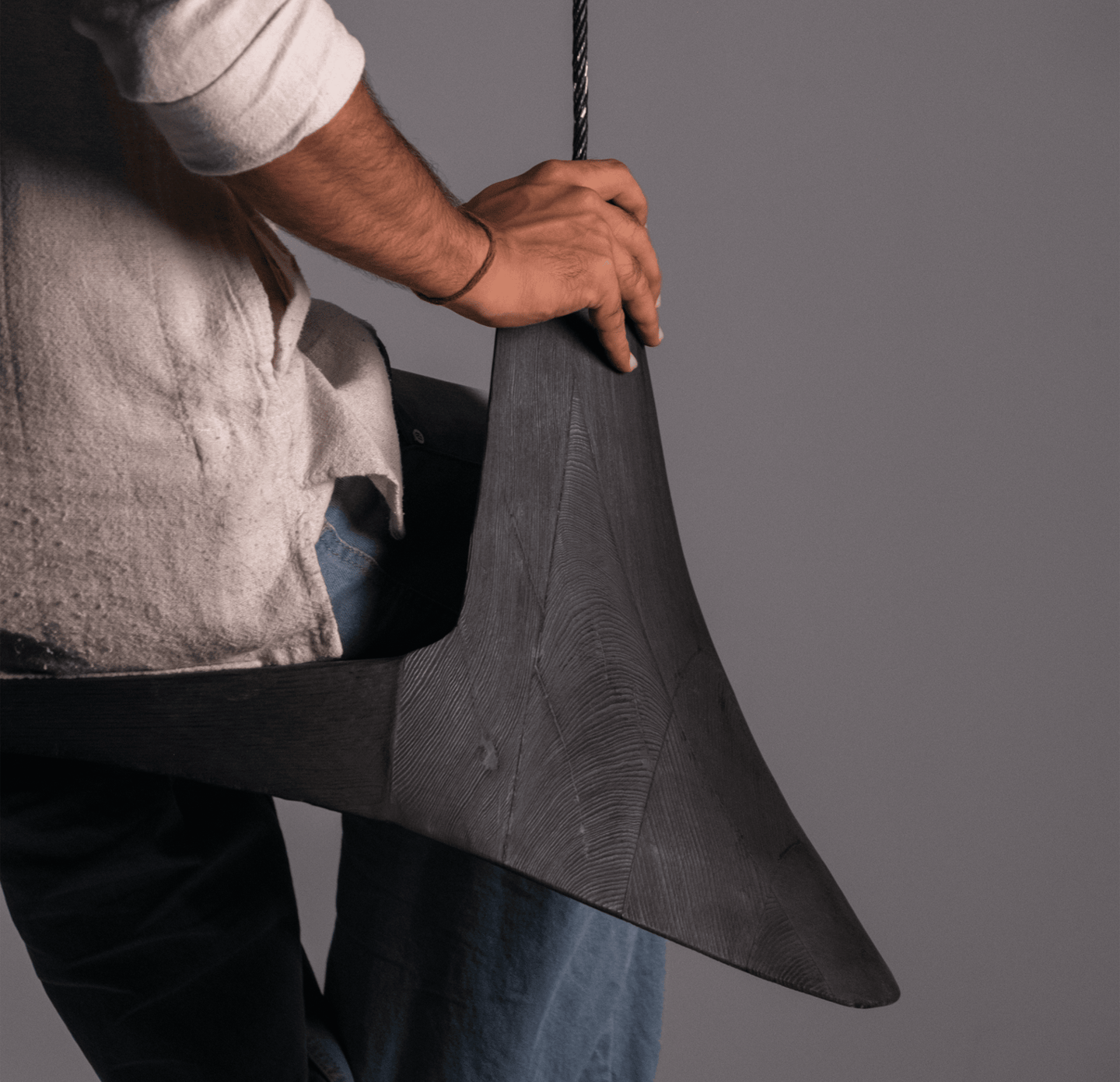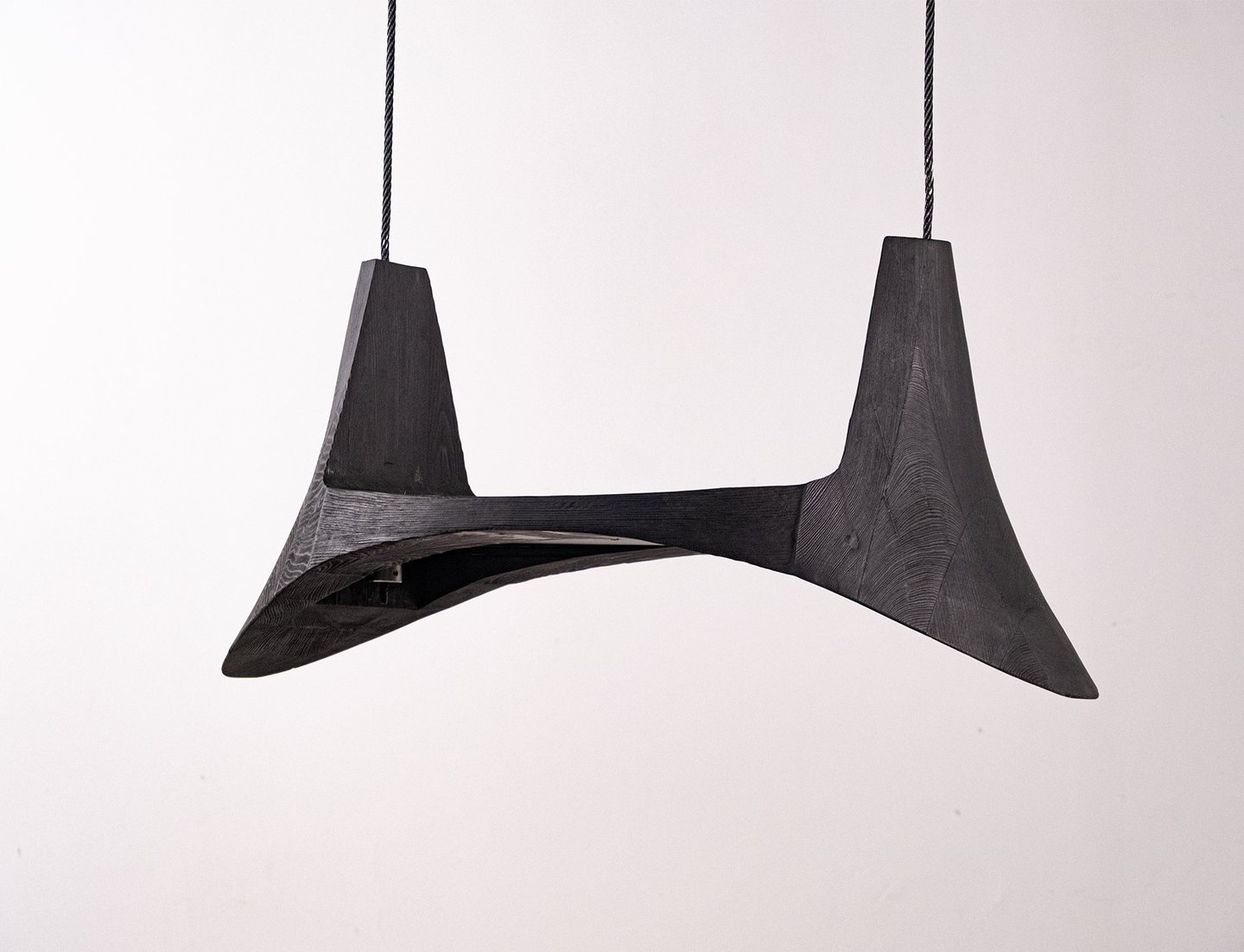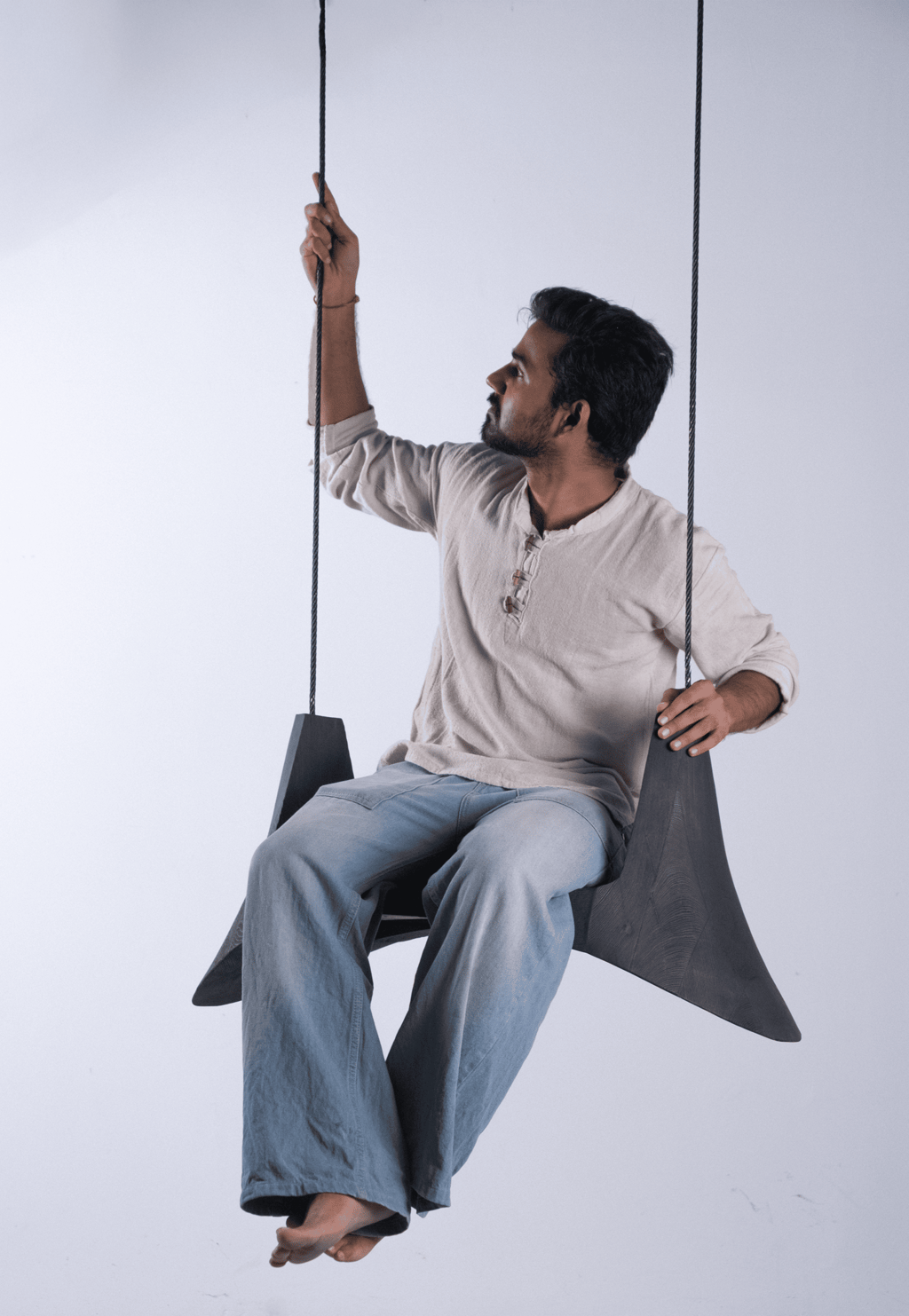

Manta Ray Swing
The Manta Swing is a singular seating apparatus, drawing its aesthetic and ergonomic principles from the elegant contours of the manta ray. Its design articulates a sophisticated balance of form and inherent motion, intended to provide a unique experiential encounter.
Initial prototyping was executed in Western Hemlock, selected for its superior grain structure and dimensional stability. The surface treatment employs the traditional Japanese Shou Sugi Ban technique, a controlled charring process that enhances the wood's durability and imparts a distinctive, rich charcoal finish. This method not only fortifies the material but also accentuates its natural texture, contributing to the piece's refined visual presence.
Conceived for adaptability across diverse contexts, the Manta Swing integrates seamlessly into contemporary architectural and interior environments. Within professional settings, it functions as a designated element within office recreation spaces, offering a discrete zone for focused contemplation or momentary repose. In residential applications, it serves as a personalized locus for individual relaxation and quietude. Its robust construction ensures suitability for sustained use, including integration within children's domestic environments, providing both aesthetic appeal and practical utility.


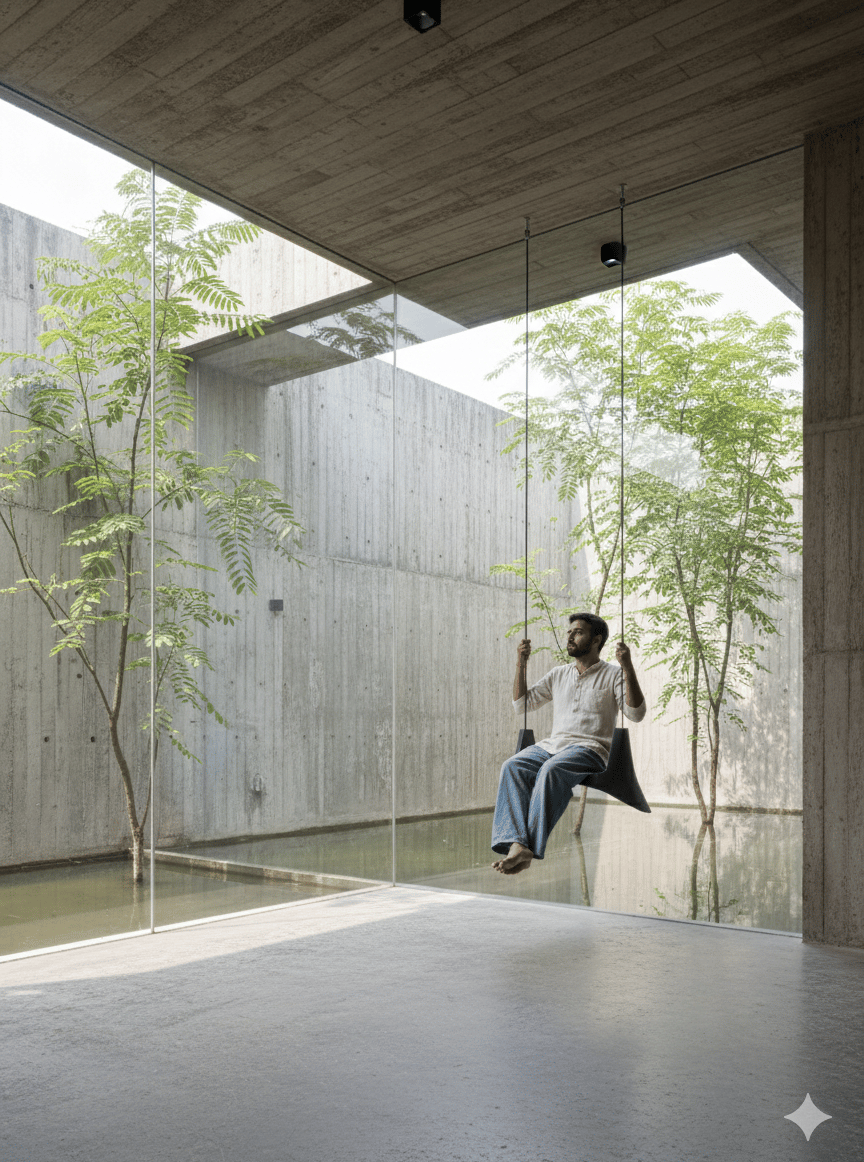



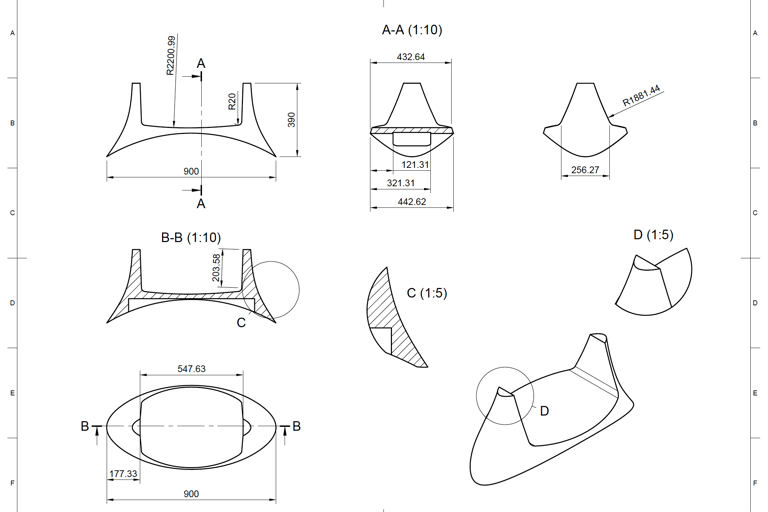

Ideation and Making Process
Once the fom and dimensions were finalised I took the technical drawing into effect for making the product into western hemlock. To support the wooden A metal 'C' plate was added at the bottom that took the majority of the load.
In fusion 360 I simulated the static load conditions of the swing. here the displacement after 1000N of force (100kg) resulted into 0.01 mm of displacement which showed that the structure is very safe and stable under the provided load conditions.
Visualizing the CNC tool path helps predict potential problems like tool collisions and inefficient cutting, ensuring a smooth and successful manufacturing process before it begins. It's a critical step for preventing costly errors and optimizing the product's quality and production time.
